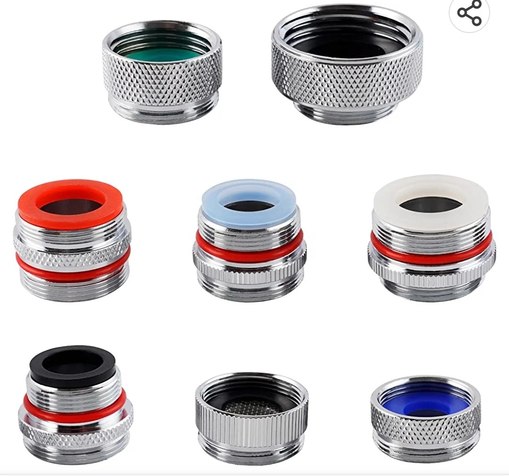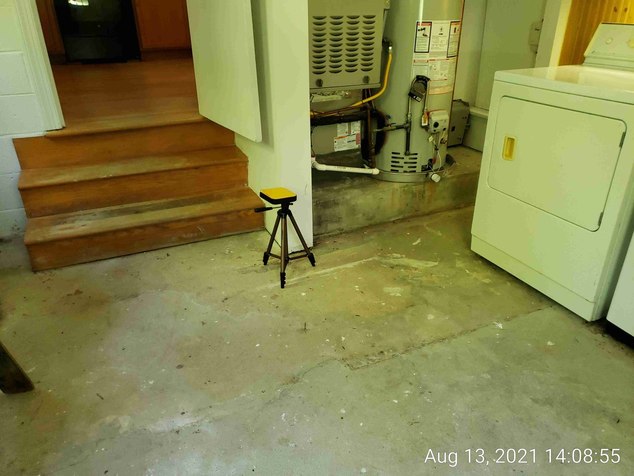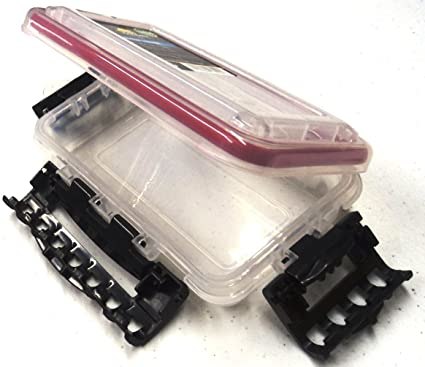Comments
-
Radon in water mysteryThat's why, even though the AirChek radon in water sample kit is designed to take the water from a spigot, we have adapters, which can be bought at any hardware store, to take the water from an indoor faucet. That's where our point of use is, that's where the sample should be taken. It seems to minimize most of the factors that can make the readings vary so wildly, with the exception of course of varying well levels.
This also eliminated the discussion I had with home owners early on,
"the outside spigot is not the water we drink from THE well, why are you taking the sample there? "
They were absolutely correct so we adapted. Even though they only had 1 well. The outside spigot, if the water in the house is filtered, is typically not filtered. It extends the life of the filters.

-
Radon in water mysteryI've seen large discrepancies based on sampling differences. The Air Chek method keeps the sample running at a very low speed, without the chance of aeration, whereas the"bucket method" of running the waste into a bucket and dipping the vial into the bucket can yield wildly varying results.
There's the additional question of inline flitration. I've seen outdoor water run through a charcoal filter, instead of the indoor. Somebody installed them opposite of what they should have been.
I would think if the wellhead sample was actually taken from the well itself, not a well local spigot, if the sample was taken from the top foot or so of the well, the radon would likely have outgassed, due to exposure to the air within the well.
The right aquifer can vary wildly depending on the well level too. If the well is more full and that happens to be where the source of radon is, then you'll see a much higher reading. Likewise in that same well, if wash has been done, showers taken, cars washed out maybe some well meaning person bleached the well, then flushed it out to get the bleach out and the well hadn't recovered yet, and the radon was in that upper level of the well, you may see much lower radon levels.
I'm sure there's many other differences than can cause that variability, these are just a few that I've seen personally. -
Frozen radon systemsDoes anybody have significant data on using the insulated pvc piping? I remember seeing it at a few AARST conferences.
If it costs a bit more but saves steps, is it a $ saver in man hours vs insulation wrap or heat tape? -
Mitigation Company serving Pocahontas County, West VirginiaYou might try Dan Pickett 540-820-5891. He's out of the Charlottesville Virginia area
-
Sink holes, Post tension slabs and Radon….TrifectaAre there sub slab or even sidewall penetrations that are below grade? Below grade HVAC, Electrical etc. can move soil gas a long way in unexpected ways.
-
"our system needs service"That looks like an early system installed in the mid 80s. I've seen a few of those in the Richmond, Virginia area. The ones I've seen are vented quite some distance away from the house, typically in the woods. There was a lot of digging and trenching involved...... We've come a long ways baby!
-
In Memoriam -- Jay F. BauderA big loss to the radon community. He was a force of nature and a big teddy bear, as the video shows.
-
House from HeckGood point Jeff,
We were working with a mitigator on a problem house and the brick front stoop was about 4'x8', completely outside of the homes envelope. Every time they tried something new on the basement or crawl space, it seemed to work for a day or 3 then back to 90s in the basement and 60s in the living area above the crawl space. When they finally pulled some grabs from the front stoop void, they were hit with a 600 pCi/L and rapidly climbing burst. They never really found out what the true number was because they knew they'd hit pay dirt and pulled the grab sampler out of there! Once they addressed that space everything came down to below 1 pCi/L. They couldn't access the space so they popped a 2" suction point directly through the sidewall and pulled suction on the whole area. Voila!
Same thing is true of those sidewall issues when the home may only be 6" sub grade. Once the radon is into that block wall void it's outside the PFE of the fan and goes wherever it is pulled. -
House from HeckHenri,
Are there any exterior foundation walls that are slightly below grade? If so you may have a sidewall issue, if so, are they be the farthest walls from the suction point? -
Monitor placement locationThanks for the professional opinions on this placement. This test was done by a home inspector, not a radon professional.
The location was contested by the inspector as appropriate, I figured an unbiased observation, by radon professionals should suffice to educate the inspector.
Thanks again,
Wally -
Monitor placement locationThe location is a laundry room with minimal livability. It is the lowest level of the home.
There is also the main body of the house, about 1,200 sq ft, on a crawl space foundation with no testing devices placed.
This pic is a little wider perspective from the farthest corner of the room from the device.

-
Alarms are mandatory now on radon systemsWe're looking for more folks too Tony. A field tech, an office manager and an assistant for them + a reasonably priced software developer. Last year was our busiest year in 35 years of being in the radon field. I feel a little guilty as I've certainly been behind the 8 ball as a builder in recessions gone by.
It sounds like there will be options to just an audible alarm so that the client has a say in the matter. That may provide them with enough ownership in the process that they are more aware of the system....... maybe? -
Alarms are mandatory now on radon systemsI would suggest, that if folks have a problem with decisions, made by the committee members who donate time out of their life for the betterment of the radon community as well as safeguarding public health, get involved in the process.
It's easy to be an armchair quarterback and complain about government or committee involvement in our avocation, which, ironically arose from government involvement to begin with, yet not be willing to spend the time to sit in one of these committees to be a part of the process.
Just like the election process. If you're not willing to participate in the process, don't complain about the out come. It's easy enough to get involved. Touch base with Dallas or many others that are involved to find out how to become involved, your inputs and help will be welcomed. -
Alarms are mandatory now on radon systemsBill,
As always, you're a font of well thought out and consistently innovative thinking. You're a credit to to our avocation, both in your ingenuity and your willingness to share your hard earned knowledge. We're lucky to have you amongst us as a human being and a fellow radon innovator. -
Alarms are mandatory now on radon systemsHow about a terrarium or aquarium type heater? Or a heater similar to that which I use to heat my chickens water in the winter. It's not really about heating so much, as it is about raising the temperature enough to keep the fluid from freezing. Of course that involves more cost of running electrical or a solar/battery combination... once again, thank you chickens, similar to the automated solar powered chicken I've installed on my hen houses. It could even be temperature sensitive.
-
Alarms are mandatory now on radon systemsHi Bob,
The power outage thing is a real wildcard, not really part of a normal operational expectation, though it obviously should be, once you've experienced it.
People are amazing, no amount of signage or warning helps, if people don't read. We get calls from sellers fairly regularly who read the first sentence of our closed house door hangers that go like this, "how am I supposed to go into or leave my house if I can't open the door"...my response is to ask them to read the 2nd sentence, also in 1" tall print. "Ohhhh except for normal entrance and exiting, I probably should have read that". So folks constantly disable mitigation systems regardless of signage too. Usually because that motor is either "too expensive to run", it keeps tripping the breaker or its too loud. The last 2 should warrant a call to the mitigator.... but it's easier to turn it off or unplug it. Jeez.
I have seen mitigators use a small water proof tackle box, mounted with tapcons to the exterior of the home to house the U-Tube outside. They seem to cost from US $5-$10. I've seen clear, translucent and opaque. Drill the correct size hole for the U-Tube, properly caulk the gap around the U-Tube line and presto, awesome little U-Tube housing. I'm not sure what temperature the fluid freezes up at, I suspect the tackle box scavenges some heat from the structure, helpng that a tiny bit.Attachments FishingTackleBox_6_1024x1024.webp
(86K)
FishingTackleBox_6_1024x1024.webp
(86K)
 71QeFLmkFPL._AC_SX425_
(26K)
71QeFLmkFPL._AC_SX425_
(26K)

-
Alarms are mandatory now on radon systemsI love those "beards" for their aesthtetic, not so much for the very real potential safety hazzard if they're in a location that could impale somebody when they break loose in a free fall . I've never seen or heard of it happening, "never say never" though.
So the point is, that interior installations in a cold climate environment is a very real solution to sidestep the issue of alarms going off because of freeze ups. Additionally, it's a given that those systems are far more beneficial to the aesthtetics of the home.
Wally Dorsey Jr

Start FollowingSend a Message
- Terms of Service
- Useful Hints and Tips
- Sign In
- © 2026 Radon ListServ




